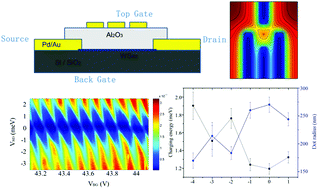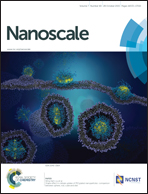A gate defined quantum dot on the two-dimensional transition metal dichalcogenide semiconductor WSe2
Abstract
Two-dimensional layered materials, such as transition metal dichalcogenides (TMDCs), are promising materials for future electronics owing to their unique electronic properties. With the presence of a band gap, atomically thin gate defined quantum dots (QDs) can be achieved on TMDCs. Herein, standard semiconductor fabrication techniques are used to demonstrate quantum confined structures on WSe2 with tunnel barriers defined by electric fields, therefore eliminating the edge states induced by etching steps, which commonly appear in gapless graphene QDs. Over 40 consecutive Coulomb diamonds with a charging energy of approximately 2 meV were observed, showing the formation of a QD, which is consistent with the simulations. The size of the QD could be tuned over a factor of 2 by changing the voltages applied to the top gates. These results shed light on a way to obtain smaller quantum dots on TMDCs with the same top gate geometry compared to traditional GaAs/AlGaAs heterostructures with further research.


 Please wait while we load your content...
Please wait while we load your content...